Next Renault E-Master can go up to 410 kilometres on one charge
Renault states that the fourth generation of the Master van series particularly emphasises the increased energy efficiency of the new ‘Aerovan’ design, regardless of the type of drive. The aerodynamic drag index (Cw value and frontal area) is more than 20 per cent lower than that of the previous generation.
Two electric variants of the new Master will be available with an output of 96 kW and 105 kW, respectively, at the market launch in spring 2024. The basic variant draws its energy from a 40 kWh battery and enables a WLTP range of 170 kilometres. The more powerful engine is combined with an 87 kWh battery, which allows a WLTP range of up to 410 kilometres.
Other features of the new generation include a payload of up to 1.625 tonnes, a towing capacity of 2.5 tons and improved consumption of 21 kWh per 100 kilometres (with the 87 kWh battery) thanks to new thermal management. The specified charging power is 130 kW DC and 22 kW AC. Charging with alternating current from 10 to 100 per cent should take just under four hours. According to Renault, energy for 229 kilometres can be charged in 30 minutes at DC stations. The manufacturer does not specify the time often used in the industry for the charging window of 20 to 80 per cent. The new Renault Master is also designed so that it can be equipped with a hydrogen drive system in the future.
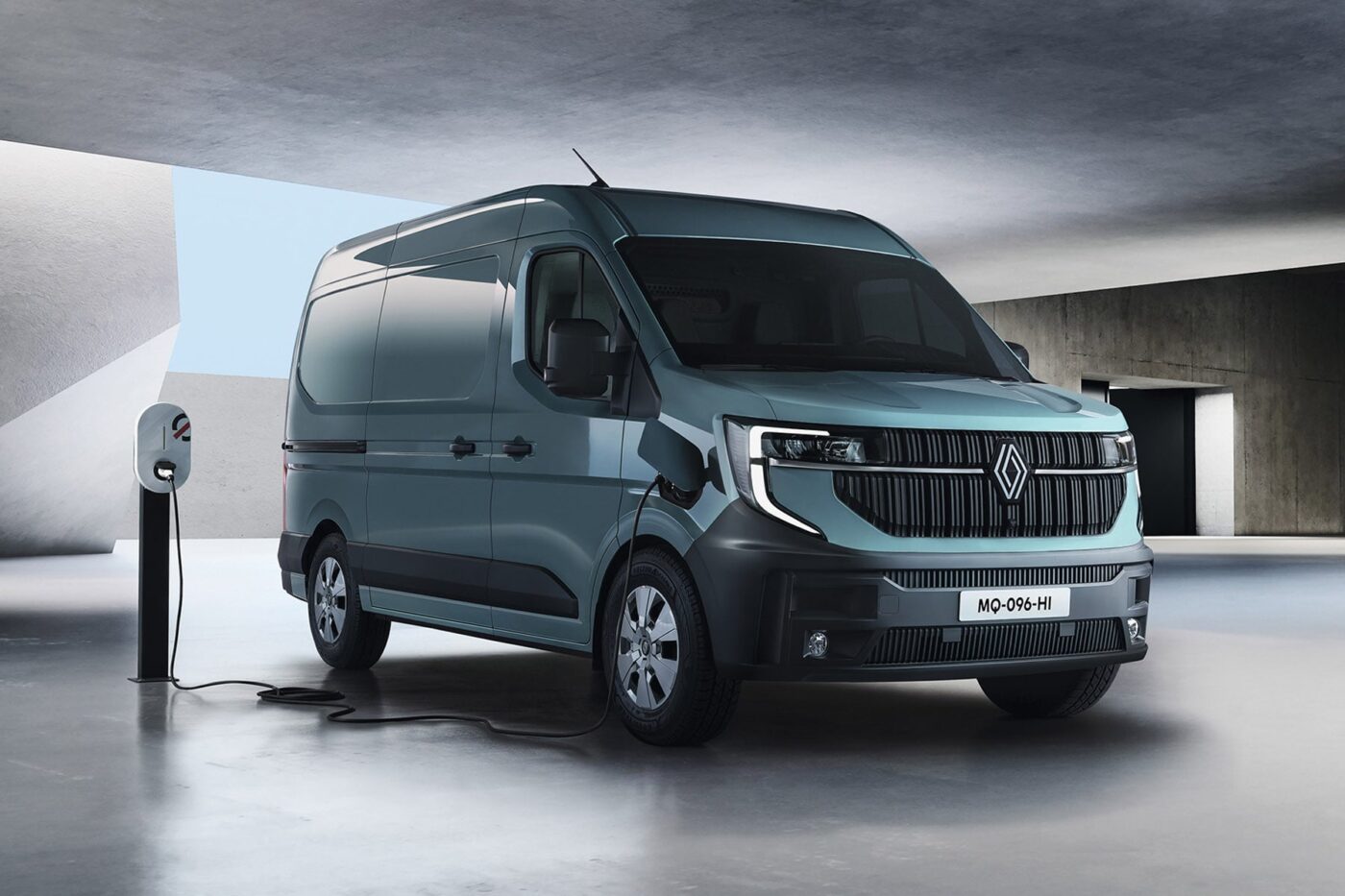
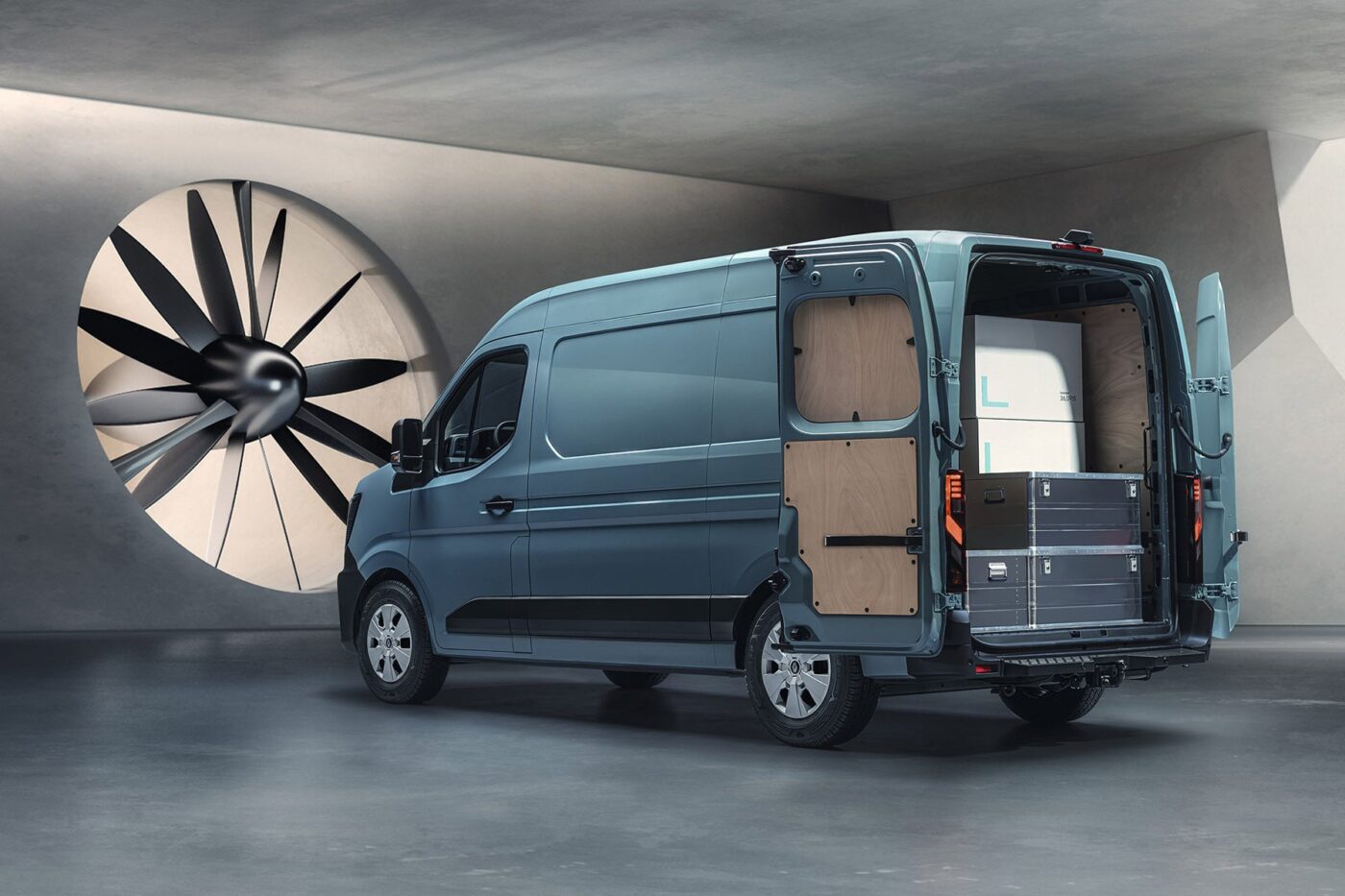
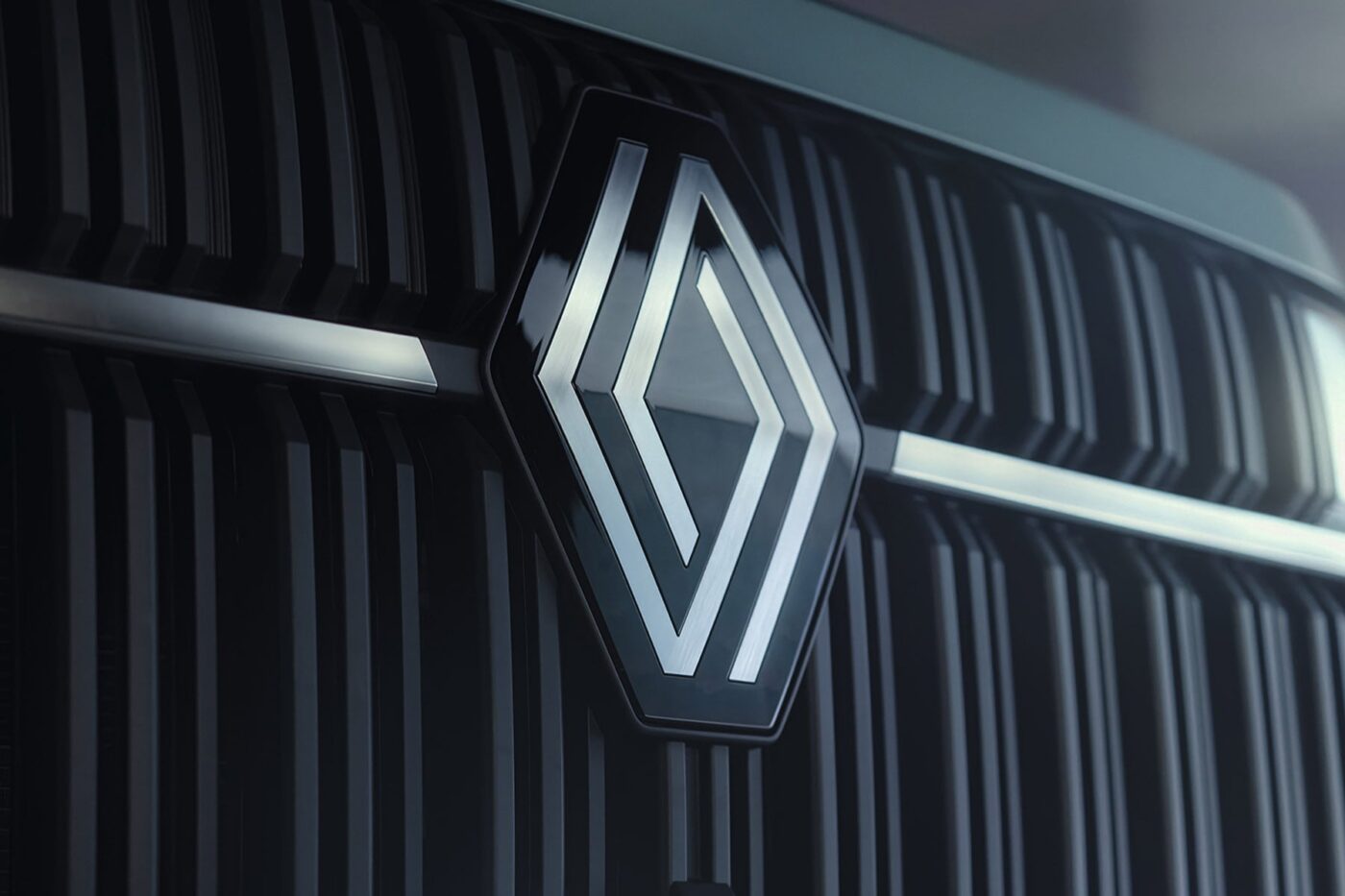
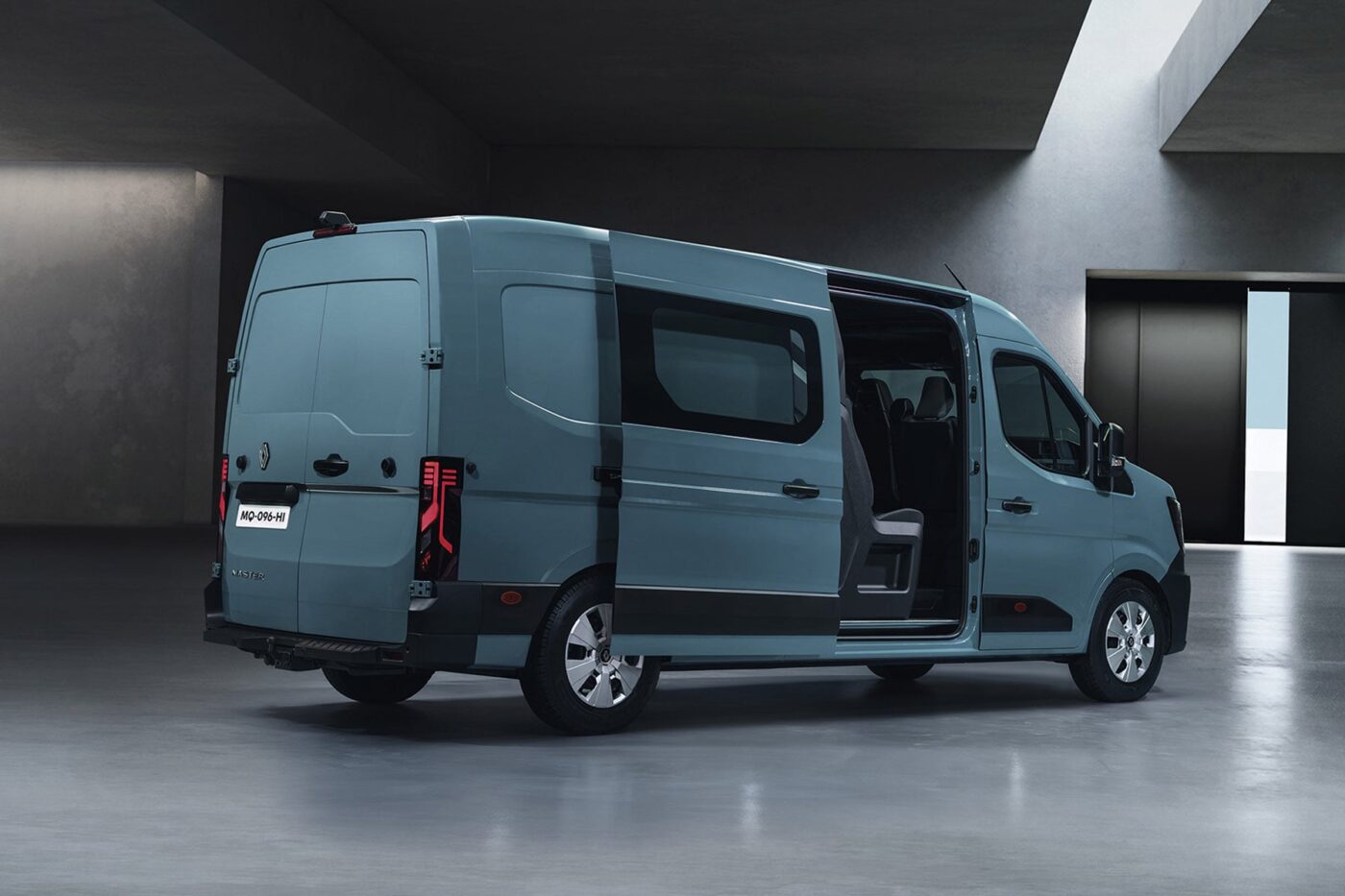
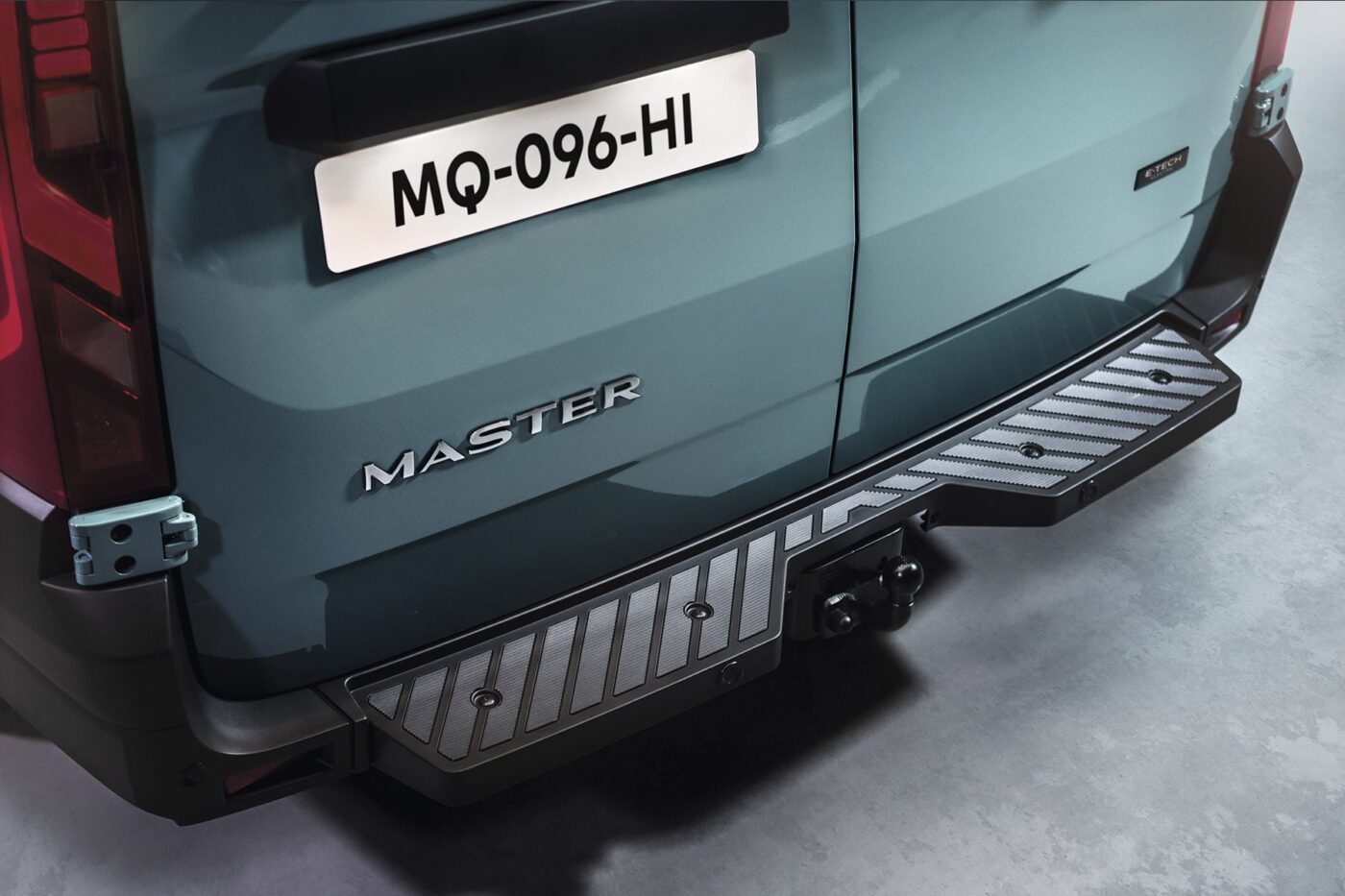
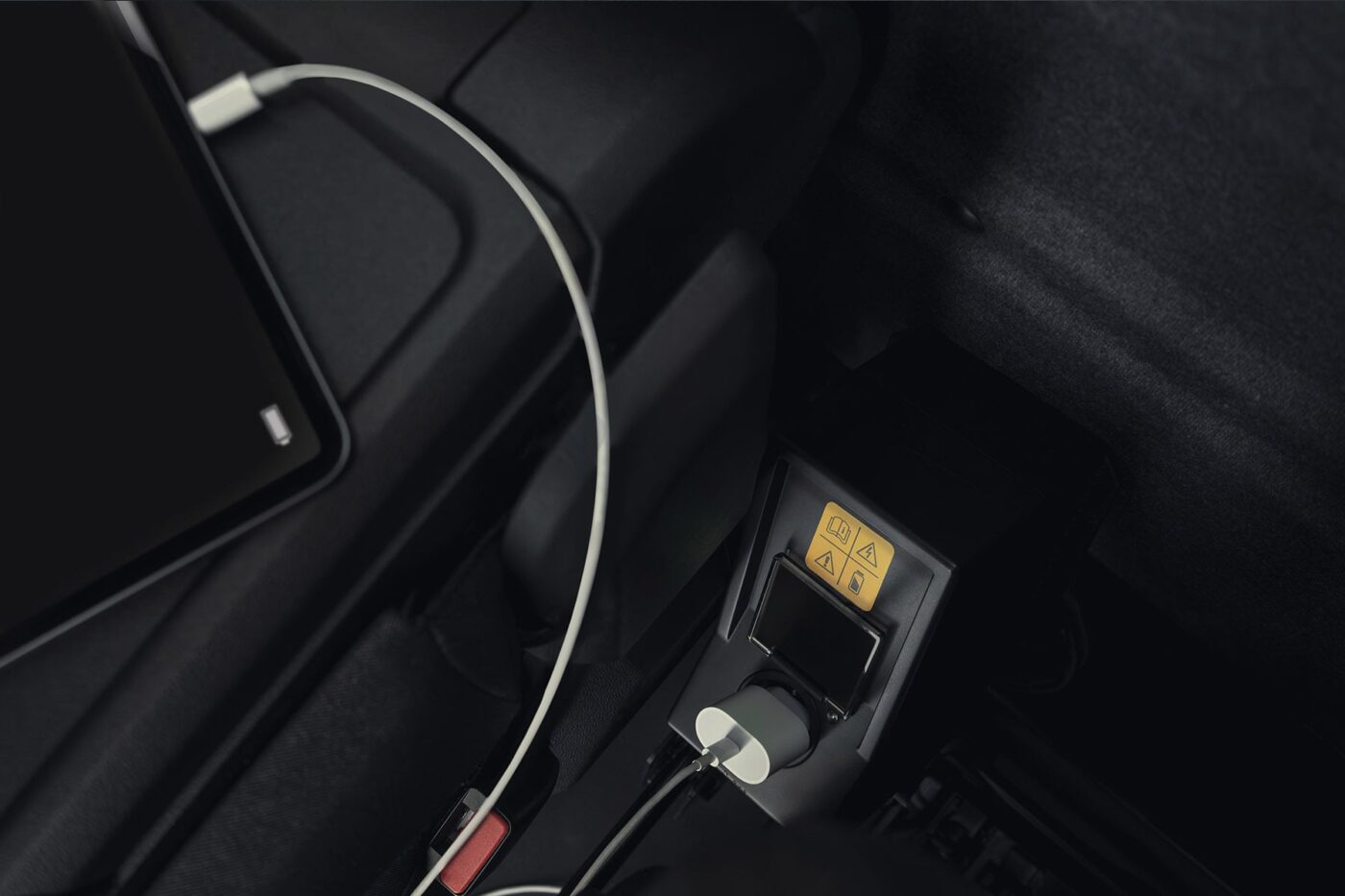
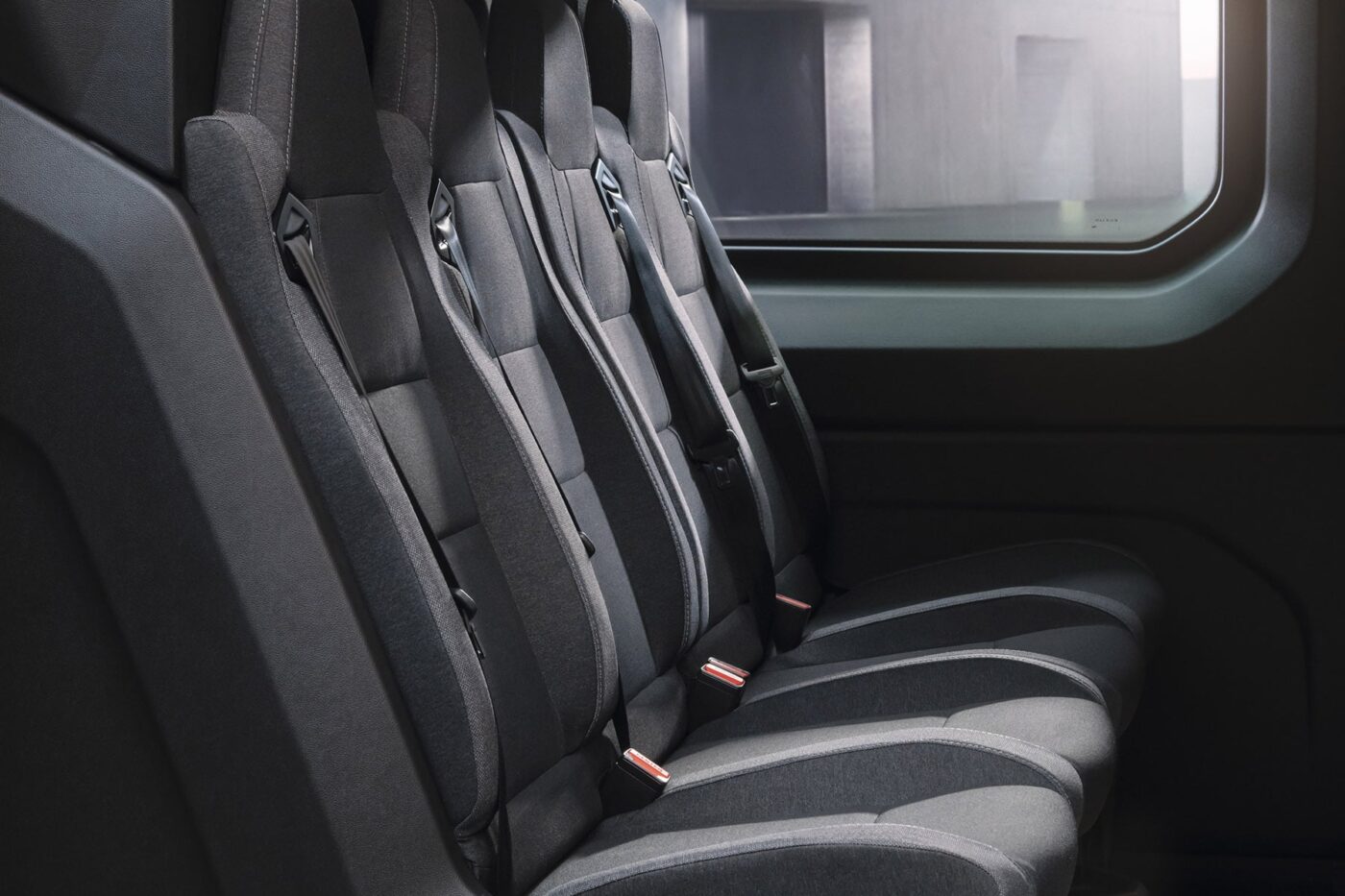
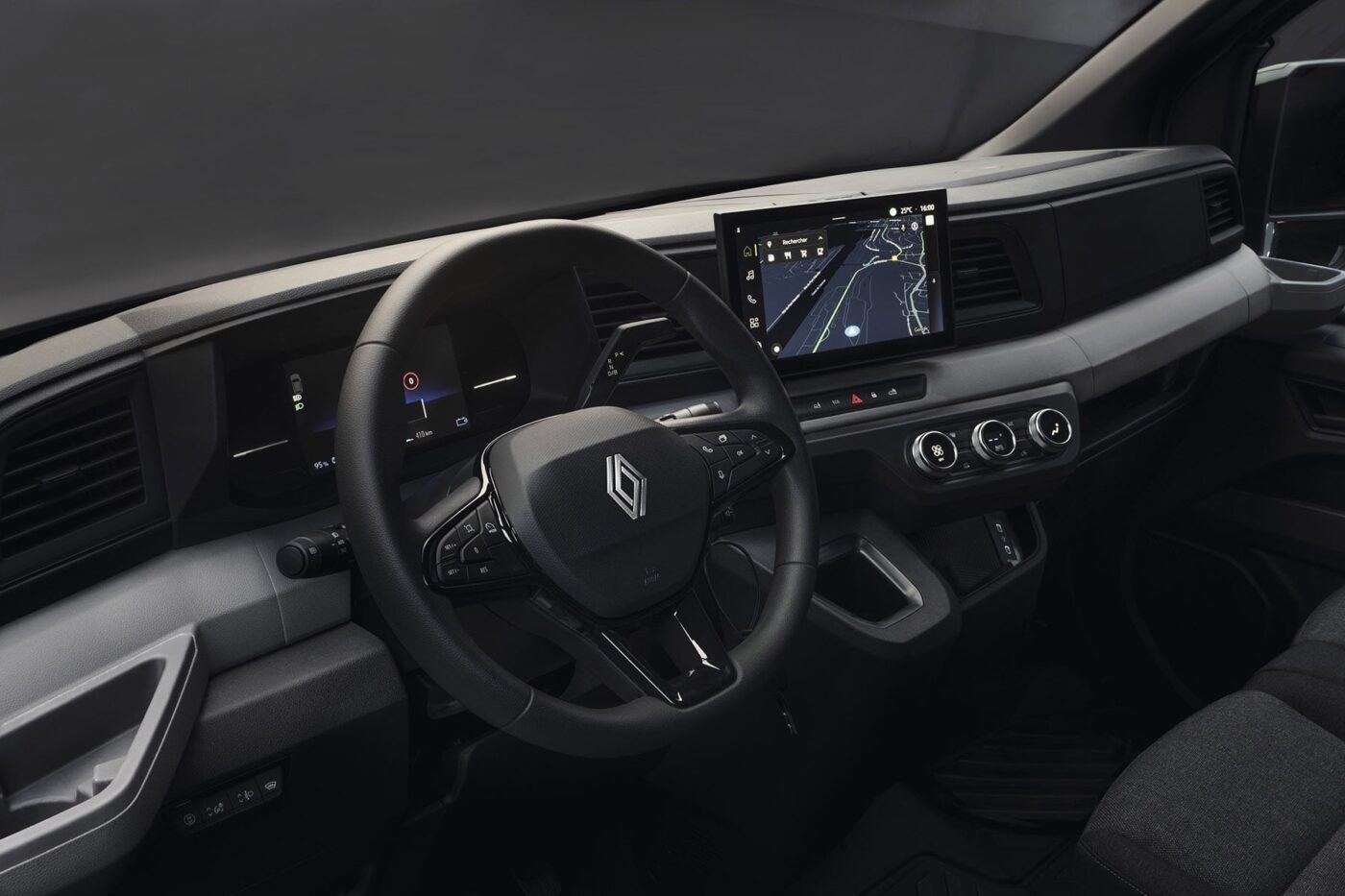
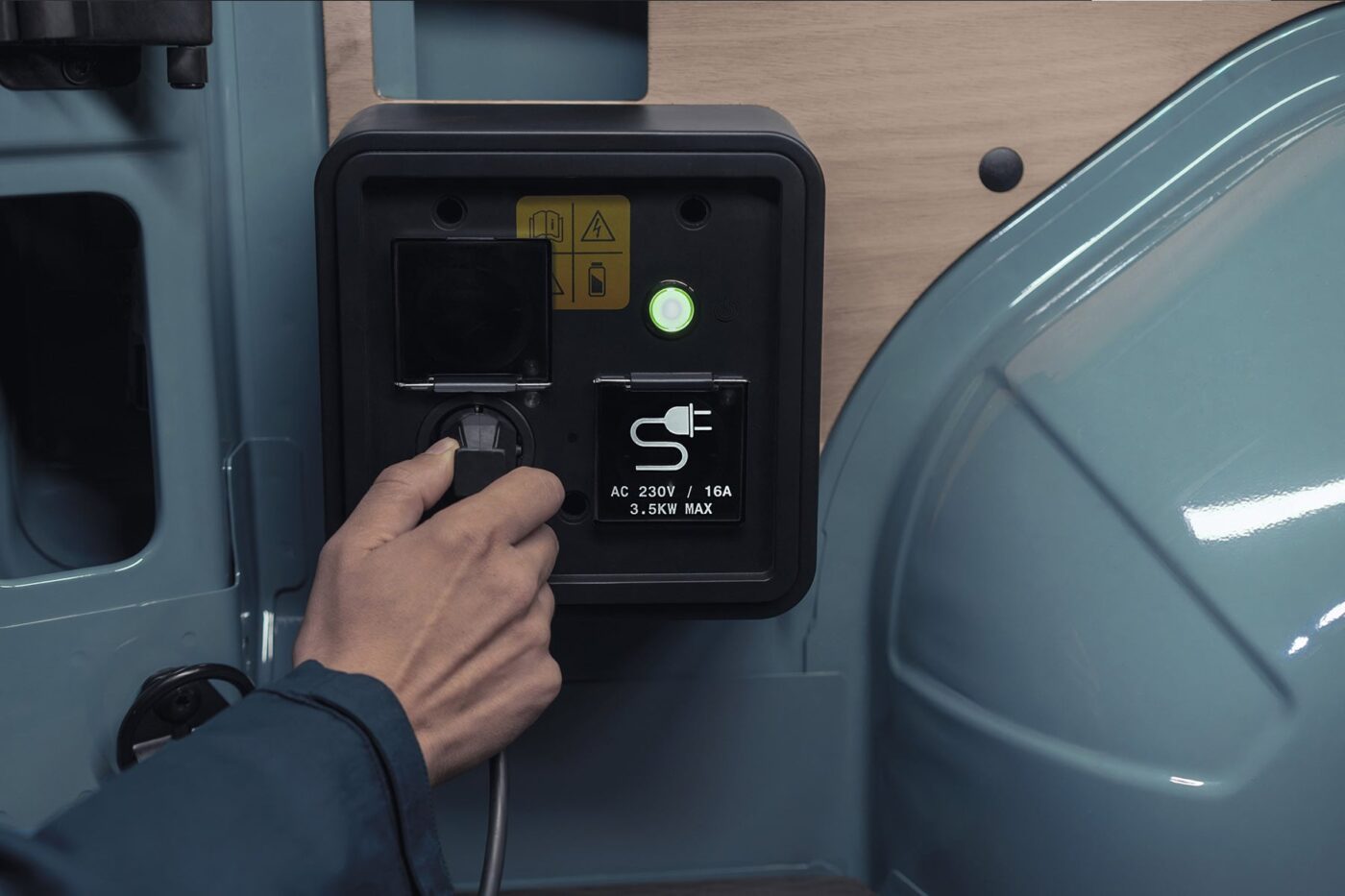
The new charging capabilities represent a major improvement on the current status. The E-Master currently only charges with 22 kW DC and 3.7 kW AC. The van has only been capable of fast charging since an update in mid-2022.
Renault also announced that the new battery-electric Master will be vehicle-to-grid (V2G) compatible, in addition to vehicle-to-load (V2L). “These include charging other devices from an outlet in the cockpit or load area, as well as adaptors to plug power tools, computers and other devices into charger outlets. You can also power custom-built body parts (refrigerated compartments, automatic tailgates, extra heating or air-conditioning systems, etc.) directly from the battery,” Renault wrote.
The range of Master variants will continue to be extensive and will include body variants with a load capacity of eleven to 22 cubic meters. Compared to its predecessor, the side loading opening is 40 millimetres wider and the loading area is 100 millimetres longer. Renault also offers factory conversions, which can be used as a basis for fitting tippers, expanding the load volume and other special designs. The following applies to all variants: “The shorter wheelbase and redesigned front axle provide unprecedented manoeuvrability, including an outstanding 1.5 metre shorter turning diameter” says Renault. However, the manufacturer does not specify the exact dimensions, including the wheelbase, in its press release.
Renault expands on the description of the aerodynamic features of the new Master: The hood is shorter, the windscreen has a flatter slope, the exterior mirrors, the air intake ducts in the bumper and the roofline are designed to be more aerodynamic and the rear is narrower, it says. Despite the narrower rear, however, the rear opening and loading area are said to be more spacious than in the predecessor. Another new feature is that the side panels each consist of a single part, which “adds to the solid look – especially in the longer versions”, according to Renault.
According to Renault, the interior of the new Master is based on passenger car standards and features an S-shaped curved instrument panel, a 10-inch display as standard and a height and length-adjustable steering wheel. Furthermore, there is a total of 135 litres of storage space inside, marking an increase of 25 per cent, various seat options and the vehicle “effortlessly turns into an office on wheels”.
Safety is ensured by 20 driver assistance systems in the new Master, including Crosswind Stabilization, Emergency Brake Assist and Trailer Stability Control. At the heart of the digital functions is the OpenR Link multimedia system with Android Auto and Apple CarPlay connectivity. “This is the first time the ultra-modern OpenR Link system with Google built-in capabilities is available in an LCV,” Renault wrote. Among other things, Google Maps, the Google Play app catalogue and the voice-controlled Google Assistant can be optionally integrated into the car.
Update 07 February 2024
Renault has updated the range specifications for the new Master E-Tech EV. At the presentation, the manufacturer had stated WLTP ranges of up to 170 kilometres with the 40-kWh battery and up to 410 kilometres with the 87-kWh battery. In a new announcement, Renault now states a range of up to 200 kilometres (40 kWh) and up to 460 kilometres (87 kWh).
When asked by electrive, a spokesperson for the company stated that the lower range figures from November were “provisional.” The new kilometre figures are now validated values. The sister model, the new Nissan Interstar-e, presented today also has a range of 200 and 460 kilometres, respectively.
renault.com, renault.com (update)




0 Comments